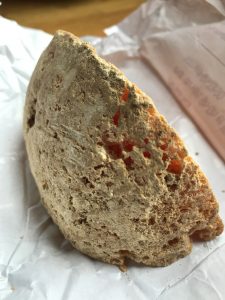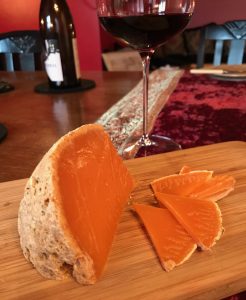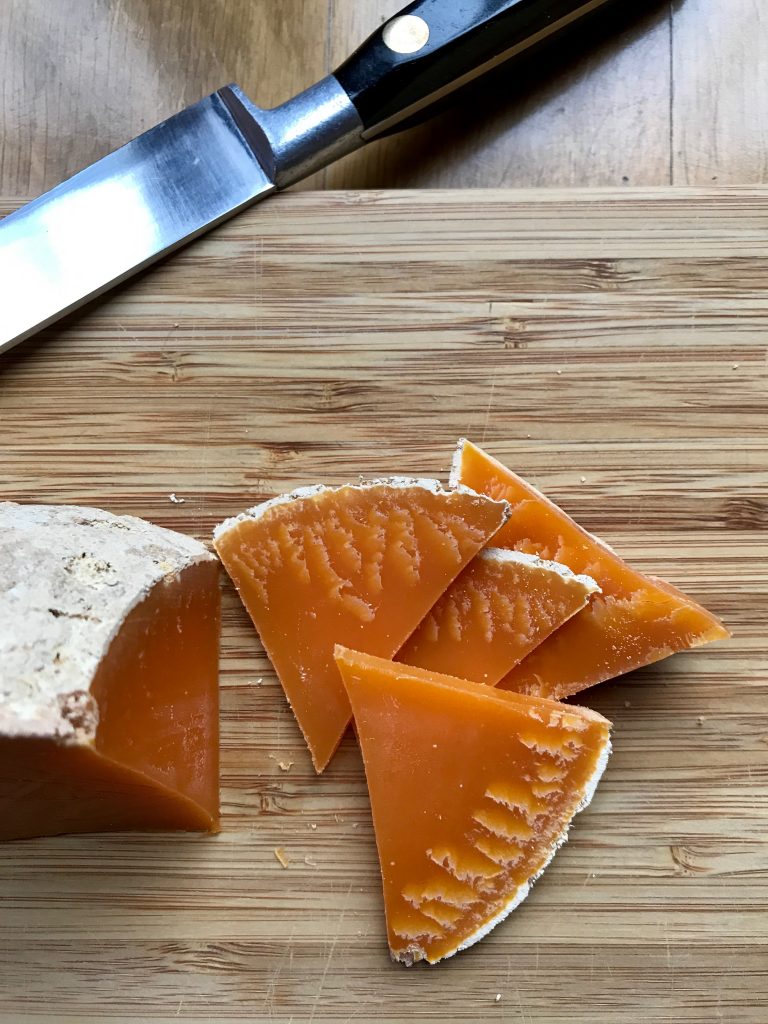This a monthly series which I have been publishing for years. To get the latest cheese promptly delivered directly on to your screen you can subscribe here.
An aged Mimolette isn’t exactly a contestant for a beauty award; its rind is like pockmarked with more or less deep craters. The ever so slightly flattened spherical cheese, about the size of a bowling ball, is also really inconvenient to handle. To tackle it with a knife at an advanced (that is: the right) age of at least 12 months represents a risky balancing act that requires courage, experience and true dedication.

Because Mimolette at that age is an amazingly hard cheese which tends to break into flakes, and its demands on domestic accoutrements are way above average. Unloved Christmas gifts in the form of toylike designer cheese knives and cheese plates made of glass can be dealt with very diplomatically using the discreet help of an aged Mimolette. However, once the ball is tamed, split, and cut, its true character and values are revealed. Inside it glows in deepest orange, with a few very small round holes.
Mimolette might crumble and flake when being cut, but on the palate it is never dry or even dusty, instead seducing reliably with an almost juicy smoothness. As intense as its orange glow is its citrussy, nutty aroma. Also, and that’s why I offer it to you for these last cold days, aged Mimolette truly loves wine. It is in fact one of the best cheeses to have with red wine (which, contrary to common belief, can’t be said of many).

It pairs beautifully with even the boldest tannic driven wines from Bordeaux, but also embraces very happily a sumptuous Shiraz from Australia (and at the same time tastes so good with a fruit-driven dry Riesling – just saying ;-). Obviously its orange color doesn’t have anything to do with red wine, but is due to the seeds of a South American bush called annatto which have long been used to dye butter and cheese. It is said that the French started this to distinguish their Mimolette from the regular yellow one from the Netherlands, at a time when the two countries were at war and the French government replaced expensive imports with home production. Back then the only difference was the color whereas nowadays the Dutch version is covered in the kind of coating widely used for gouda; much cleaner, but taste wise much less exciting. Therefore: arm yourself with a solid knife, attack your round, hard friend, and then open the red wine – before spring comes for real, and with it that longing for fresh whites in the glass.
PS If you like to know more about cheese mites (which are responsible for the pockmarks), you’ll find a link here (in German, and you’ll have to scroll down a bit).And: Mimolette is made from cows‘ milk.

This a monthly series which I have been publishing for years. To get the latest cheese promptly delivered directly on to your screenYou can subscribe here.
If you enjoyed reading this, you might consider clicking on the button below and supporting me in my work. I’d be more than happy. Thank you.
